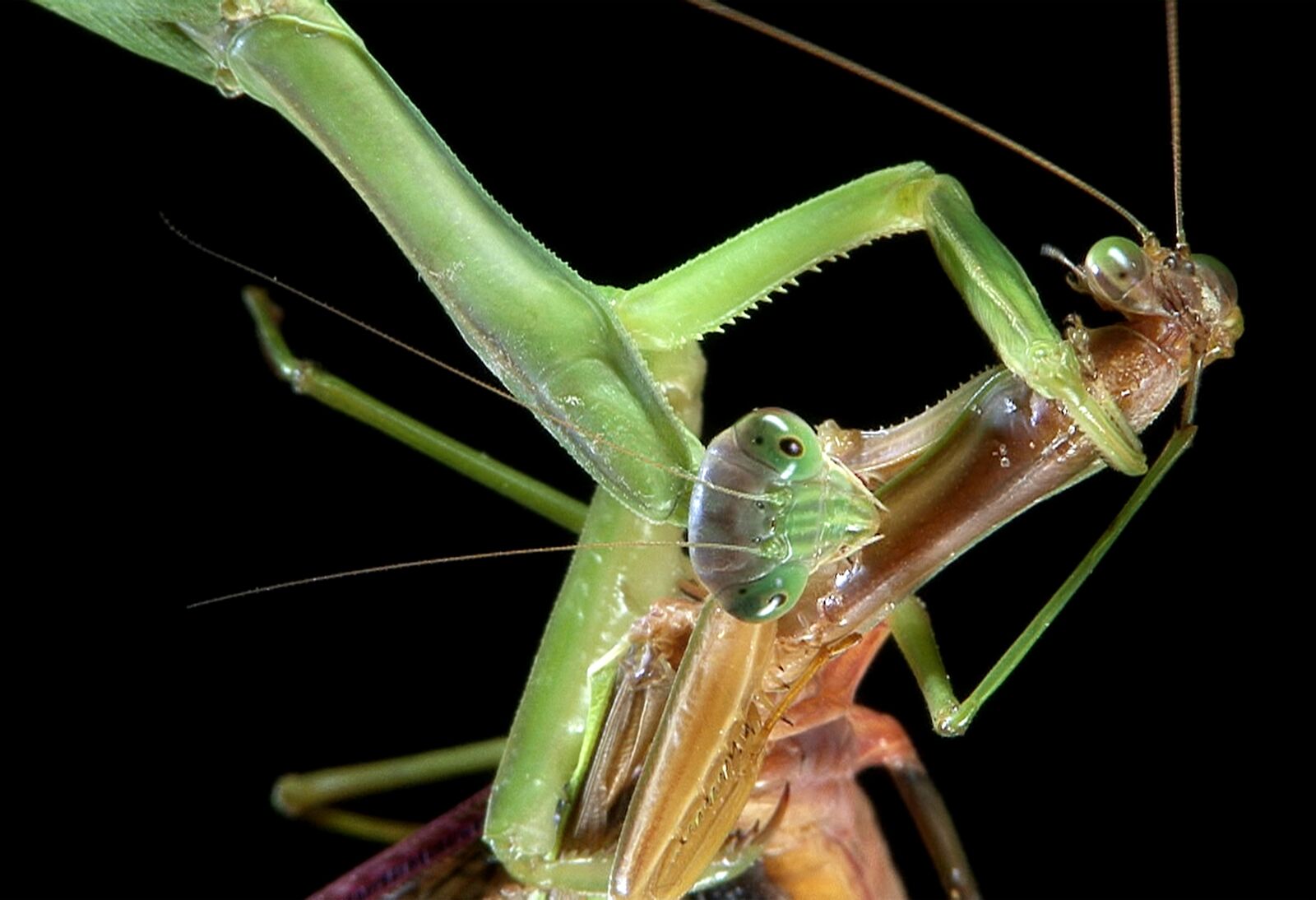Friends with Benefits? Cannibalism Not All Bad for Male Praying Mantis

Hungry female praying mantises don't hesitate to turn their sexual partners into lunch, so striking up a "friends-with-benefits" relationship with these creatures may seem a tad one-sided. But, from an evolutionary point of view, sexual cannibalism can also benefit the male mantis, according to a recent study.
The new research quantifies some of the ways in which the consumption of a male mantis could help produce more offspring with his genes.
The researchers focused on the Chinese mantis, Tenodera sinensis, in which females eat males in the wild before, during or after sex about 20 percent of the time. [Animal Sex: 7 Tales of Naughty Acts in the Wild]
"What we see is a very clear conflict of interest between the male and the female," study co-author William Brown, a biologist at the State University of New York at Fredonia, told Live Science. "But also in the male, in terms of his drive to reproduce and his reservations about approaching the female."
Radioisotope labeling, feeding the insects amino acids containing distinctive variants of atoms, allowed researchers to track the transfer of nutrients from male to female to eggs. Brown had previously used a similar technique to study katydids and crickets, but this time the researchers fed marked crickets to the mantises.
In a laboratory setting, researchers sequestered pairs of males and females and allowed them to mate. Half of the couples were then separated, while the others were left to their inevitable fate.
Males who weren't cannibalized passed on 25.1 percent of their labeled isotopes to females via ejaculate, but 88.9 percent was transferred through cannibalism, providing quantitative evidence of the difference in nutrients cannibalism can provide, the researchers said.
Sign up for the Live Science daily newsletter now
Get the world’s most fascinating discoveries delivered straight to your inbox.
There was no immediate difference in the number of eggs laid by cannibal females versus non-cannibals, according to the researchers. But a female mantis can lay multiple clutches of eggs, and later egg sacs laid by cannibalistic females contained twice as many eggs on average, they found. Although there was a significant increase, the exact influence of cannibalism on the number of eggs is unclear because of a wide range of results.
Because female mantises store sperm, eggs produced after a male has been eaten can still be fertilized, the researchers said, at least until the first killing frost.
"[While] in most cases it’s not the best case scenario to be cannibalised, the cost to males is at least partially mitigated by this increase in the number of eggs fertilised as a result of being eaten," study co-author Katherine Barry, a biologist at Macquarie University in Australia, wrote in an email to Live Science.
"We can consider that an extreme form of paternal investment in offspring," Brown said.
Michael Maxwell, a behavioral ecologist at National University in La Jolla, California, who was not involved in the study, said the findings are interesting because "it traces the path of the male's nutrients through the female's reproductive physiology."
"This kind of analysis is overdue for mantises," Maxwell told Live Science in an email.
Still, the finer details of how likely the male is to be the father compared to another partner, or how likely he is to mate again if he survives sex have yet to be studied. Maxwell said he would like to see the quality of offspring resulting from cannibalism investigated as well.
Those factors are part of balancing the mating equation for male mantises, who still avoid cannibalization despite any Darwinian upside. "We have no behavioral evidence of complicity of males," Brown said. "We see male caution here overall, but we see changes in the degree of caution."
The findings were published June 29 in the journal Proceedings of the Royal Society B, Biological Sciences.
Original article on Live Science.










